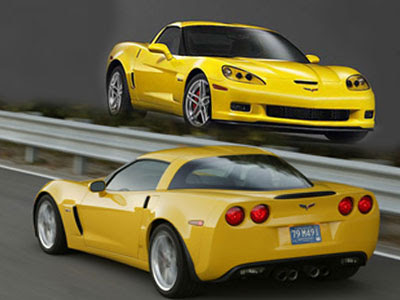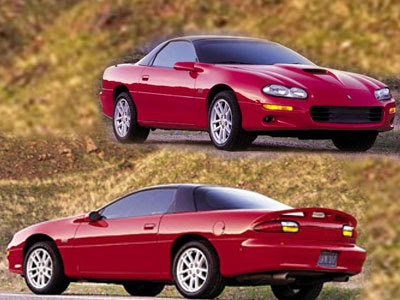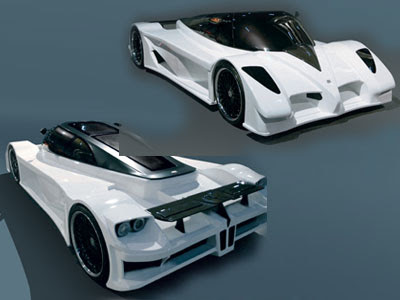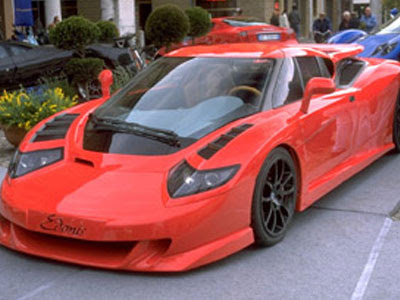Monday, March 16, 2009
 A Transformers 3 movie is now officially planned: Paramount Pictures and DreamWorks Pictures are aiming to release The movie Transformers 3 on July 1, 2011.
A Transformers 3 movie is now officially planned: Paramount Pictures and DreamWorks Pictures are aiming to release The movie Transformers 3 on July 1, 2011.
The studios didn't say much more, but we all know that Shia Labeouf and Michael Bay will be back.
Want to get really excited about Transformers 3? Just think about the technological advances in CGI and other special effects that this movie will benefit from!
Let's knock on wood for Transformers 3 to be released in due time!
:)
Labels: Cinema, DreamWorks, Film, July 2011, Michael Bay, Movie, Paramount, Release Date, Shia Labeouf, Transformers 3
Wednesday, March 4, 2009
ZO6 Chevrolet Corvette The most powerful passenger car engine.
The Corvette Z06 is the fastest, most powerful car ever offered by Chevrolet and General Motors. It is comprised of an unprecedented level of capability and technology, making it one of the greatest performance values on the market.Chevrolet introduced the Corvette Z06 at the North American International Auto Show.
The Corvette Z06’s powertrain and drivetrain systems are matched to the LS7’s performance capability. The light, four-into-one headers discharge in to new, close-coupled catalytic converters and through to new “bi-modal” mufflers. The mufflers each feature a vacuum-actuated outlet valve, which controls exhaust noise during low-load operation but opens for maximum power.
With 500 horsepower and 475 lb-ft of torque, The ZO6 is the most powerful passenger car engine ever produced by Chevrolet and GM. The LS7 is easily identified under the hood by red engine covers with black lettering.
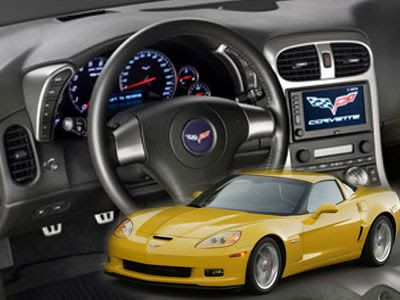
The aerodynamics of the Corvette Z06’s exterior were shaped by the experiences of the Corvette racing program, where high-speed stability and cornering capability are paramount. And while the racecars use large rear wings, the Z06’s elevated spoiler provides sufficient downforce to balance the road-worthy front splitter without adversely affecting aerodynamic drag. The Z06’s Cd is 0.31.
For all its race-inspired functionality, the Corvette Z06 is designed to be a daily drivable high-performance vehicle. To that end, comfort and convenience are held to a very high standard. HID lighting, fog lamps, leather seating, dual-zone air conditioning, cabin air filtration and Head-Up Display (HUD) with track mode and g-meter are standard.
Sunday, February 15, 2009
The MK IV Chevrolet Camaro retained the same layout as the very first Camaro's back in 1967, 2-doors, 2+2 seating, rear-wheel drive, choice of V6 and V8 powerplants, and available in both coupe and convertible forms (the convertible was introduced in 1994).
The fourth-generation Chevrolet Camaro debuted for the 1993 model year on the previous generation Camaro platform.
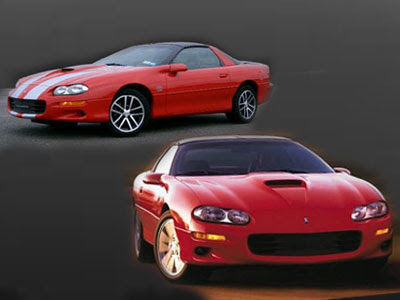
The MK4 Camaro featured the 5.7 L (350 cid) LT1 V8 engine that had been introduced in the Corvette one year earlier, as well as an optional six-speed manual transmission. The 1998 model year was refreshed and revised with both exterior and engine changes. Replacing the LT1 was GM's all-new 5.7 L (346 cid) LS1 which had been introduced with the Corvette C5.
The Camaro is to return in 2009 however as a retro styled sports coupe.
The fourth-gen Camaro would last up through the 2002 model year, at which point production was stopped due to slow sales.
Labels: Chevrolet, Spors Car, Sport coupe
Friday, February 13, 2009
Frogeye Sprite Austin Healey the first of several Sprite models
0 comments Posted by org at 11:33 PMFrogeye Sprite Austin Healey the first of several Sprite models.
The prominent headlights were initially intended to be flip-up units. However the cost of retractable headlights was to high, and instead they were fixed in what would have been the 'up' position. Their unusual location gave rise to the cars affectionate nickname, the "Frogeye" Sprite.
The Austin Healey Sprite MK I was powered by a 1.0 litre, inline, four cylinder engine which developed a grand total of 43 horsepower. Coupled to a four speed manual gearbox it was capable of propelling the car up to 84 mph.
The Frogeye Sprite (which was discontinued in 1961) was the first of several Sprite models. In 1962 the MK II Austin Healey Sprite was introduced. The MK II introduced several updates, the most noticeable of which was a more conventional headlight layout. From 1961 the Austin Healey Sprite was also sold as the MG Midget.
Labels: Austin Healey, Race Car, Spors Car
Thursday, February 5, 2009
MK III Austin Healey 3000 Improved due to engine modifications.
0 comments Posted by org at 10:59 PMThe Austin Healey 3000 was the replacement car for the Austin Healey 100/6. The Austin Healey 3000 was a superior car to its predecessor, equipped with many improved features and updated parts. During its production lifetime the Austin Healey 3000 went through three different versions, the MK I, MK II and MK III.
The Austin Healey 3000 MK I (1959 - 1961) was fitted with a 3.0 litre inline six cylinder engine developing 124 horsepower. The engine was equipped with twin SU carburetors. And the car featured disc brakes at the front.
The Austin Healey 3000 MK II (1961 - 1963) introduced several improvements and design changes. The engine was enhanced by the fitment of triple SU carburettors which bumped the power up to 132 horsepower. In 1962 the BT7 2+2 version was introduced. This seating layout became the only option from 1962 onwards. The Austin Healey 3000 MK IIa introduced wind-up windows, a curved windscreen, and a convertible hood.
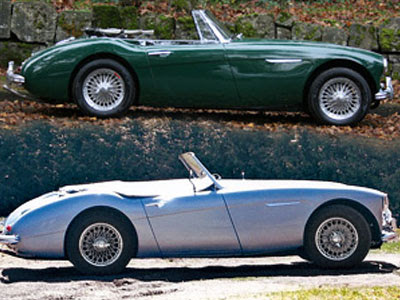
The Austin Healey 3000 MK III (1963 - 1967) was the final version of the 3000 model. The performance was improved due to engine modifications. Peak power was raised to 148 horsepower, giving the 3000 MK III a top speed of 120 mph. The brakes were also enhanced with the fitment of a servo.
In 1967, due to new safety regulations in the cars biggest market - America, the Austin Healey 3000 was discontinued. It's replacement, the MGC, was nowhere near as popular as the Austin Healey 3000.
During its lifetime the Austin Healey 3000 proved to be a capable racing car. And it competed successfully in rally and road races around the world.
Labels: Austin Healey, Race Car, RacingCar, Rally Car, Spors Car
Saturday, January 17, 2009
The Beck LM 800 is built on the principle of lightweight and aerodynamic efficiency. It uses composite materials to to keep the weight down and a form over function styling brief to keep the frontal area and drag coefficient to a minimum.
The LM 800 is a supercar from Beck Engineering & Composites GmbH based in Switzerland. The Beck LM 800 went on show in January 2007 in Vienna.
The construction of the Beck LM 800 is similar to that found in Formula 1 race cars with a carbon, Kevlar and aluminium composite monocoque protecting the driver and passenger, as well as providing a rigid base to attach the engine and transmission mounts and front control arms of the chassis. The LM 800 has an electronically controlled, hydraulic active chassis also influenced by F1 technology, which reacts to telemetry data and helps to keep the car firmly stuck to the road.
The engine is a V8 especially produced by MTM for the Beck LM 800 with a displacement of 4.2 litres and, thanks to two turbochargers, delivers a performance of around 650 HP (variable from 550 - 1000 hp) to the drive shaft. The drive unit is designed in such a way that even acceleration is achieved across the entire range up to a top speed of over 217 mph. The semi-sequential 7-speed gearbox is perfectly coordinated with the Beck LM 800 and reacts instantly to driver input.
The wheels of the Beck LM 800 are specially made and formed from aluminium. An in-built hydraulic jacking system makes tire changes a breeze.
Monday, January 12, 2009
The Edonis cannot be described as a beautiful car, but it certainly eye catching. Its angular, complicated lines crash awkwardly together in a chaotic fashion, this trend is evident from almost every angle. The headlights give the impression of tiredness, or even depression.
The Edonis supercar is a creation of B. Engineering, a company run by Jean Marc Borel. The Edonis was intended as a demonstration of the design and prototype abilities of his company. The B. Engineering Edonis is a genuine supercar with a 0-60 time under 4 seconds, and a maximum speed of 225 mph.
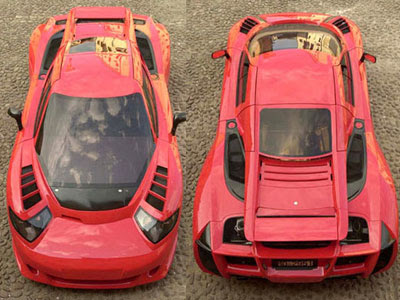
The Edonis has little to be sad about. Twin turbochargers feed a 3.7 litre V-12 engine to create a whopping 680 bhp at 8,000 rpm. All this power is run through a six-speed manual gearbox.
Using a monocoque built from carbon fiber the Edonis is very strong and light. All the cosmetic exterior body panels are aluminum. To reduce weight further aluminum brake calipers are used.
To save even more space and weight the Edonis rides on Michelin PAX run-flat tires, this means a spare wheel is surplus to requirement.
Labels: Design Car, Edonis, Prototype, Super Car
